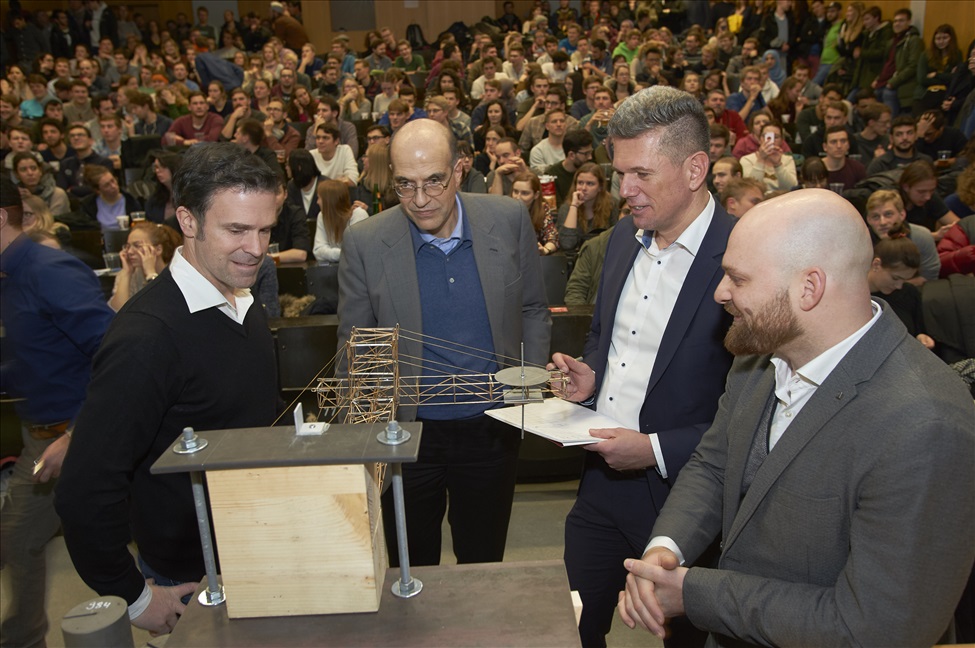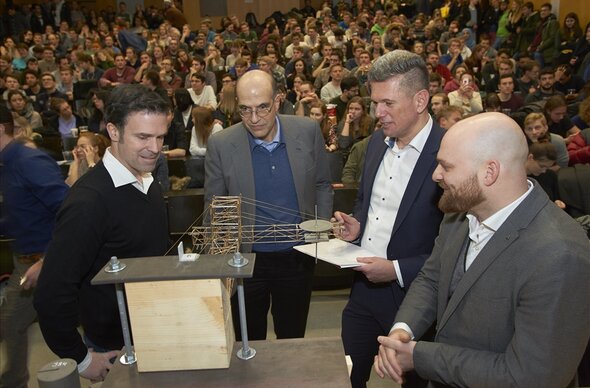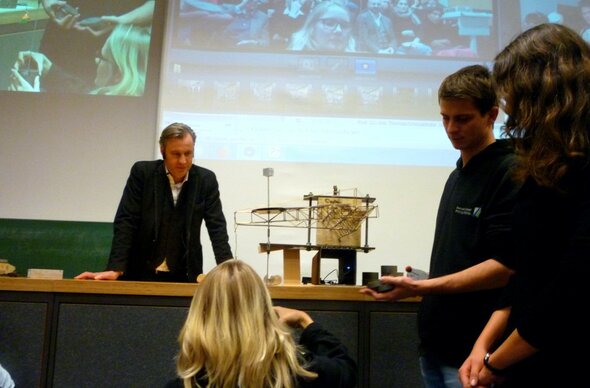KREBS+KIEFER sponsors student competition at KIT (Institute of Technology in Karlsruhe)
The topic of this year’s construction competition at KIT (Institute of Technology in Karlsruhe) was “Skywalk-torsion carrier” and was organised by the Research Centre for Steel, Wood and Stone at KIT under the leadership of Prof. Ummenhofer and the student association of civil engineering.
The topic of this year’s construction competition at KIT (Institute of Technology in Karlsruhe) was “Skywalk-torsion carrier” and was organised by the Research Centre for Steel, Wood and Stone at KIT under the leadership of Prof. Ummenhofer and the student association of civil engineering.
The design and the subsequent construction of a 90° angled cantilever made of steel for a skywalk on the highest floor of a high-rise were to be realised. The aim was to develop a filigree and simultaneously rigid construction as a spacious frame structure with a high load-bearing capacity.
Alongside the rigidity and the load-bearing capacity, the aspects: creativity, aesthetics and implementation were to be considered. The latter was assessed by a professional jury on which Dr. Retzepis, Managing Associate of KREBS+KIEFER Ingenieure GmbH, Karlsruhe was present.
A performance value was calculated based on the named parameters and the jury’s assessment.
A total of 16 groups, consisting of students from the 1st to the 7th semester, specialising in civil engineering and architecture, confronted the challenge, whereby one group was exclusively comprised of students from the 1st semester.
All building materials and required equipment, above all tools for soft-soldering, were provided by the Research Centre for Steel, Wood and Stone thanks to donations without further contribution towards expenses.
On 13 December 2017, within the scope of a closing event, the groups presented their 16 models. In a full lecture theatre with over 300 students, each group explained their created construction with the planned concept. Every model was assessed by the jury and the constructions were subsequently tested in practice.
They were initially weighed, the sag under the unit load was measured by laser and the rigidity of every construction was thus determined. Following this, every model was load-controlled, i.e. loaded with the help of applied weights until it sagged.
The various modes of failure, such as ductile or brittle behaviour, as well as local or global failure, were clearly demonstrated in this manner.


